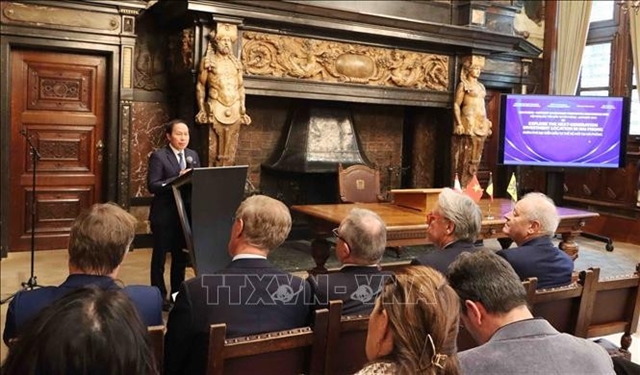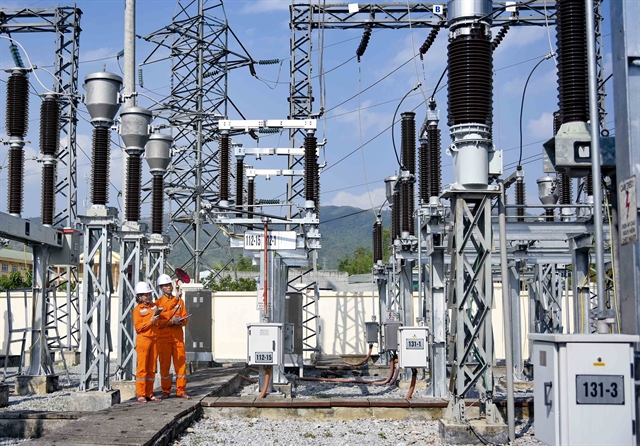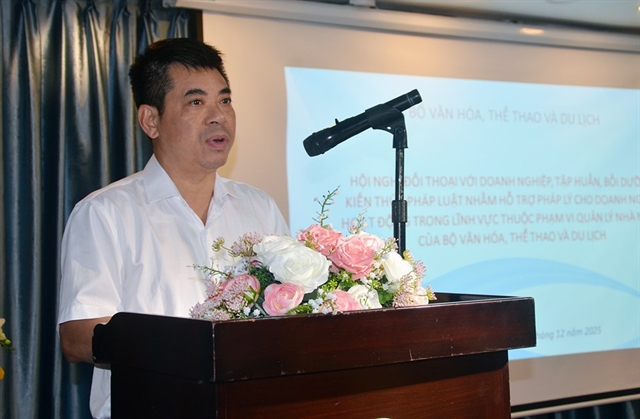 Economy
Economy


|
| Two workers use a PD device to examine an electrical substation in Điện Biên Province. — VNA/VNS Photo Xuân Tư |
HÀ NỘI — Việt Nam's power giant EVN has explained the reasons behind its purchase of electricity from neighbouring countries rather than from renewable energy facilities at home.
The first reason is geographical. Power shortages often strike the northern region, whereas wind and solar farms predominantly cluster around the central and southern regions. The current capacity of the national grid doesn't allow for the transmission of excessive power from the two regions to the other.
Another reason centres around power purchase agreements. Việt Nam has signed such an agreement with Laos for a long time, so it is traditional to import part of its power consumption from the neighbour. The same goes for China, which has been its power exporter since 2005.
Deputy Minister of Industry and Trade Đặng Hoàng An said the imported electricity was a drop in the bucket compared to what generators produced at home. Việt Nam imported around 10 million kWh per day while generating 850 million kWh per day.
"We import electricity not because we are short of electricity, but because it is in line with our power purchase agreements," said An.
EVN has also clarified its stance on why its subsidiaries put dozens of trillions of đồng in banks while EVN itself pressed for a hike in power prices.
EVN said it is common practice to make deposits into banking accounts to service short-term debts. By the time the subsidiaries deposited their money, their short-term debts had amounted to over VNĐ60 trillion (US$2.56 billion). As such, they had to maintain a sufficient banking balance to keep good credit scores.
EVN also said its negotiations of power purchase with renewable energy facilities had got results. By May 31, 40 out of 50 facilities that requested temporary prices equaling half the ceiling prices defined in Decision No.21 had been approved by the ministry.
More importantly, seven facilities with a total capacity of 430MW had come into operation and connected to the national grid.
EVN also said it had actively embraced digital transformation to improve its operational efficiency. And as a result of the ensuing increased productivity, its headcounts on the payroll fell by 1,100 year-by-year.
EVN has phased in digital electric metres since 2015 to supersede mechanical metres which require manual reading. About 80 per cent of the mechanical metres had been replaced to date, and the phase-in was expected to be completed in 2025. — VNS




